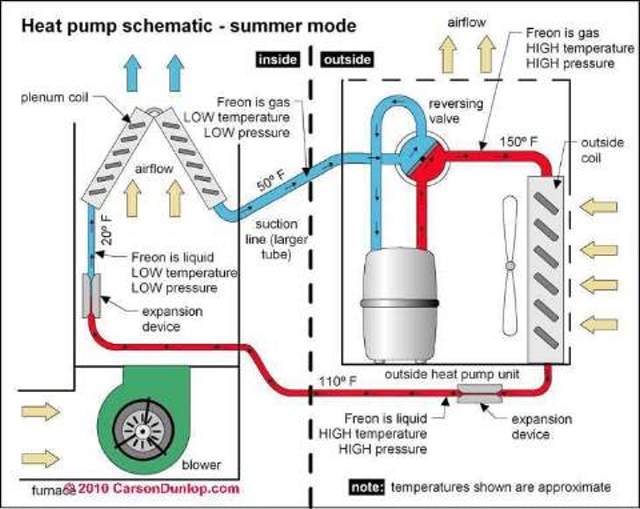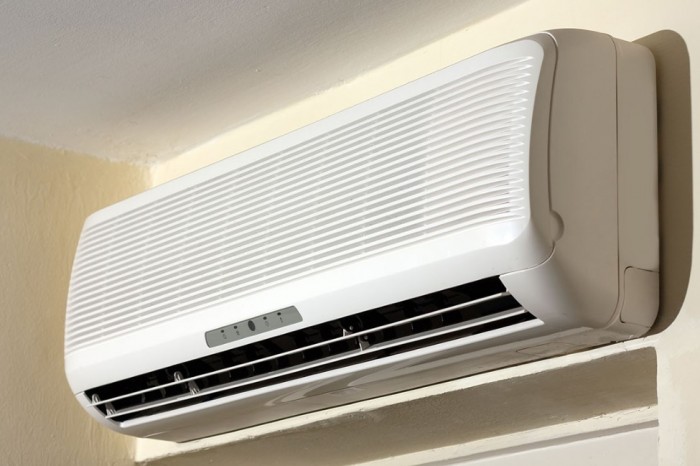Did you recognize that 85% of all cooling concerns can be fixed without the need for expert support? When your a/c starts breaking down, comprehending where to begin troubleshooting is crucial.
From strange noises to warm air blowing out, these concerns can be aggravating. Yet fear not, as with a couple of basic actions, you could be able to diagnose and deal with the issue yourself.
So, before you consider calling a professional, let's discover some usual air conditioner issues and how you can tackle them head-on.
Key Takeaways
- Address uncommon sounds immediately to stop more damages.
- Guarantee proper airflow by cleaning filters and unblocking vents.
- Inspect refrigerant degrees and clean parts for optimal cooling.
- Frequently maintain and cleanse the air conditioning to avoid leakages and malfunctions.
Unusual Noises
If your air conditioning unit is making strange sounds, don't ignore them as they could show a potential concern. One typical source of these noises can be compressor issues. A loud knocking or clanking noise may suggest that there are problems with the compressor, which is an important element in charge of distributing cooling agent. Ignoring this might cause more damage and a potential breakdown of the system.
One more possible cause of unusual sounds could be fan issues. If you listen to shrilling or squealing sounds coming from your AC device, it might direct towards issues with the fan motor or blades. The fan plays an essential function in making sure proper air movement and ventilation within the system, so attending to any kind of fan-related noises immediately is important to protect against any type of disruptions in cooling effectiveness.
Weak Air movement
Experiencing weak air movement from your a/c unit can be a sign of underlying problems that require to be resolved quickly. 2 typical culprits for this trouble are a filthy filter and obstructed vents. An unclean filter limits the airflow by trapping dirt and debris, making it harder for air to go through. This can cause decreased air flow and an overworked system. To resolve this, find the air filter in your system and either clean or change it according to the maker's suggestions.
Obstructed vents can likewise impede airflow. Check all the vents in your house to ensure they're open and unblocked. Sometimes furnishings or products put near vents can inadvertently obstruct the airflow. ductless heating and cooling By rearranging any blockages, you can aid enhance the circulation of trendy air throughout your area. If these actions don't improve the air movement, it might be time to contact a specialist specialist to evaluate your cooling system additionally.
Cozy Air Blowing
When warm air is blowing from your cooling device, it may suggest a potential issue that requires troubleshooting. Here are some key locations to check:
- Thermostat settings: See to it that your thermostat is set to the correct temperature level and cooling down setting. In some cases, an easy adjustment to the settings can deal with the problem of warm air blowing from the AC system.
- Cooling agent levels: Low cooling agent degrees can cause the air conditioning system to blow warm air. If you think this is the concern, it's ideal to speak to a specialist cooling and heating specialist to check and fill up the cooling agent as required.
- Air filter and condenser coils: A clogged air filter or unclean condenser coils can limit air flow and impede the cooling procedure, causing warm air being blown out. Frequently examine and replace the air filter as required, and see to it the condenser coils are clean and without particles to assist keep peak air conditioning performance.
Dripping or Dripping Water
Check for water leakages or trickling from your a/c unit to identify prospective problems that require interest. Leaking water can be a sign of issues such as condensation buildup or a clogged up drain.
Condensation build-up happens when cozy air overlooks the chilly evaporator coils within your a/c device. This procedure creates moisture airborne to condense into water beads. Typically, this water is accumulated and receded effectively. However, if you observe water dripping from your unit, it might show an obstruction in the drainage system.
A stopped up drainpipe is a typical problem that can cause water leakage. In time, dust, dirt, and algae can collect in the drain line, creating a blockage. This obstruction stops water from being correctly drained pipes, causing leakages or leaks from the system.
To deal with these problems, you can try clearing the drainpipe line using a wet-dry vacuum or a mixture of bleach and water to eliminate any kind of blockages. Normal upkeep and cleaning can aid stop condensation build-up and blocked drains, keeping your AC system running efficiently.
Air conditioning Not Switching on
If your cooling device isn't turning on, first inspect the source of power and thermostat settings to fix the issue.
- Power Source: See to it that the a/c is plugged in effectively and that the electrical outlet is working. Occasionally a stumbled circuit breaker or a blown fuse can be the reason for an absence of power to the a/c device.
- Thermostat Settings: Inspect the thermostat to see to it it's set to a temperature listed below the current area temperature. If the thermostat is battery-operated, change the batteries to see if that resolves the issue.
- Air Filter: An unclean air filter can limit airflow and trigger the air conditioning system to close down. Take a look at the air filter and replace it if it shows up clogged or unclean.
Regularly Asked Questions

Just How Can I Improve the General Effectiveness of My Air Conditioning System?
To enhance your a/c unit's effectiveness, start by obtaining air duct cleaning done routinely. This helps safeguard excellent air movement.
Next off, execute an insulation check to avoid any kind of air leakages that might make your system work harder.
These simple steps can make a huge distinction in just how well your air conditioning device operates, keeping you awesome and saving you money on energy costs.
What Are Some Common Maintenance Tasks I Can Carry Out to Maintain My Air Conditioning Running Smoothly?
To maintain your a/c running smoothly, make sure to clean the coils consistently and examine the refrigerant levels. These jobs are critical for keeping the efficiency of your system.
By cleaning the coils, you assure appropriate air flow and air conditioning. Keeping track of refrigerant levels assists prevent problems like overheating.
Normal maintenance such as this will maintain your a/c system working properly and expand its life expectancy.
Exist Any Type Of Safety Tips I Should Understand When Troubleshooting My Cooling Unit?
When fixing your a/c device, keep in mind to prioritize electric safety to prevent crashes.
Always shut off power prior to servicing your HVAC system.
Beware of cooling agent leakages, as they can be unsafe.
Normal a/c inspections and condenser cleansing can aid keep your unit and stop safety dangers.
Stay attentive and follow security guidelines to assure a smooth repairing process and a well-functioning air conditioning system.
Exactly how Commonly Should I ReplACe the Air Filters in My Air Conditioning System?
You should change the air filters in your a/c unit every 1 to 3 months for top performance.
The regularity of filter substitute relies on elements like the type of filter you make use of and just how commonly you run your a/c.
High-efficiency filters may need altering less frequently, while basic filters ought to be replaced a lot more frequently to keep your system running smoothly.
Routine filter changes guarantee reliable airflow and better air high quality in your home.
Can I Set Up a Programmable Thermostat to Aid Manage the Temperature Level in My Home Better?
Yes, you can install a programmable thermostat to help regulate your home's temperature more effectively. By establishing particular temperatures for different times of the day, you can achieve energy financial savings.
To set up, ensure to turn off power, label cords, install the brand-new thermostat, link the cords, and program it according to your schedule.
Delight in much better temperature control and possible power cost savings with a programmable thermostat.
Final thought
To wrap up, fixing usual a/c problems doesn't have to be a challenging job. By following these basic DIY steps, you can easily address troubles like:

- uncommon noises,
- weak air movement,
- warm air blowing,
- leaking water,
- a system that won't switch on.

Remember to constantly prioritize safety and consult a specialist if required.
With a little patience and knowledge, you can maintain your air conditioning running smoothly and your home cool and comfy.
